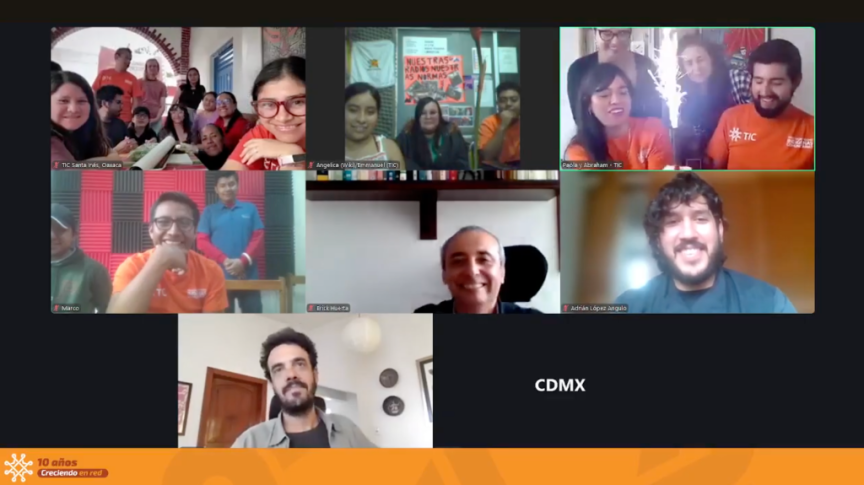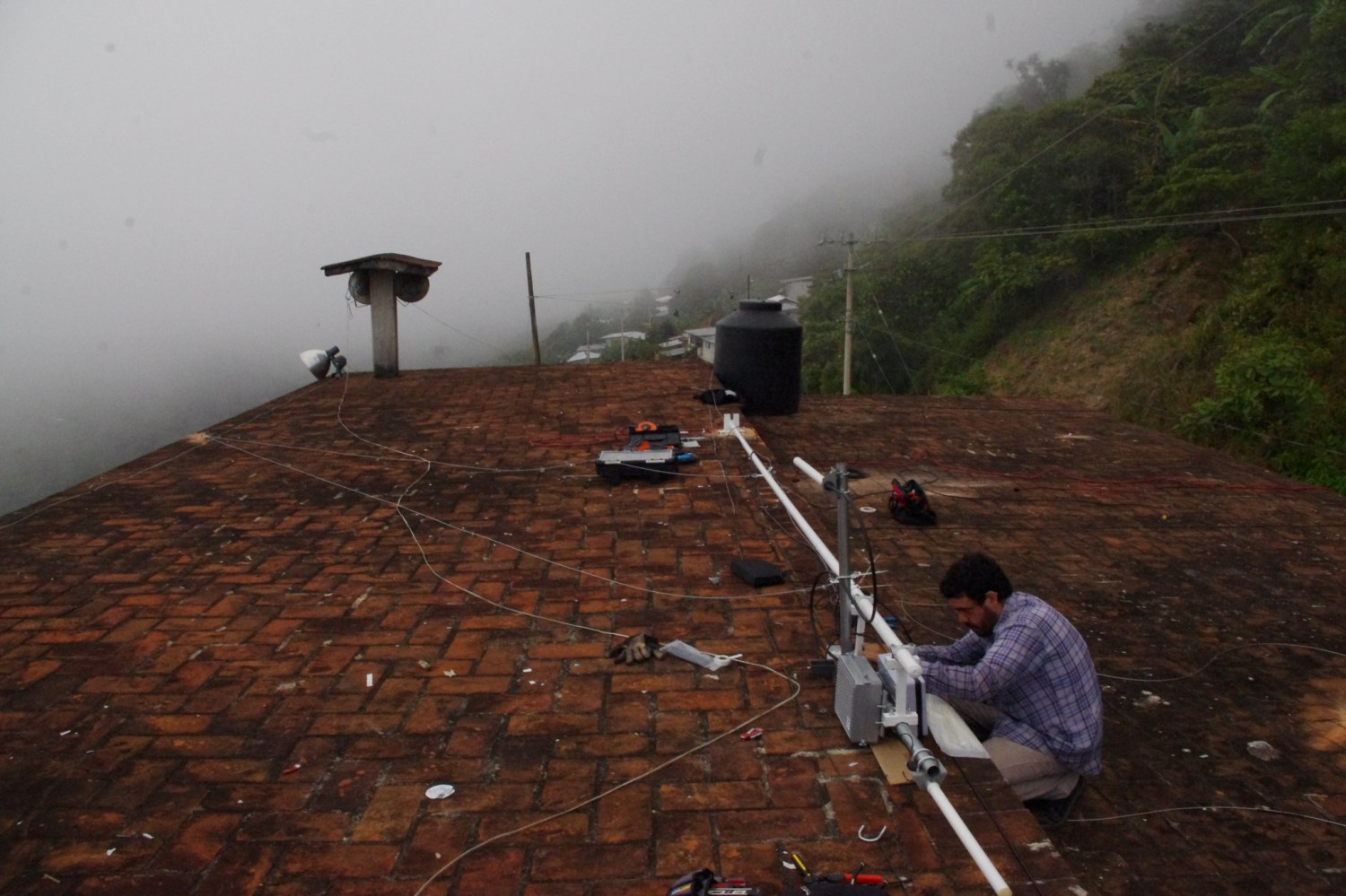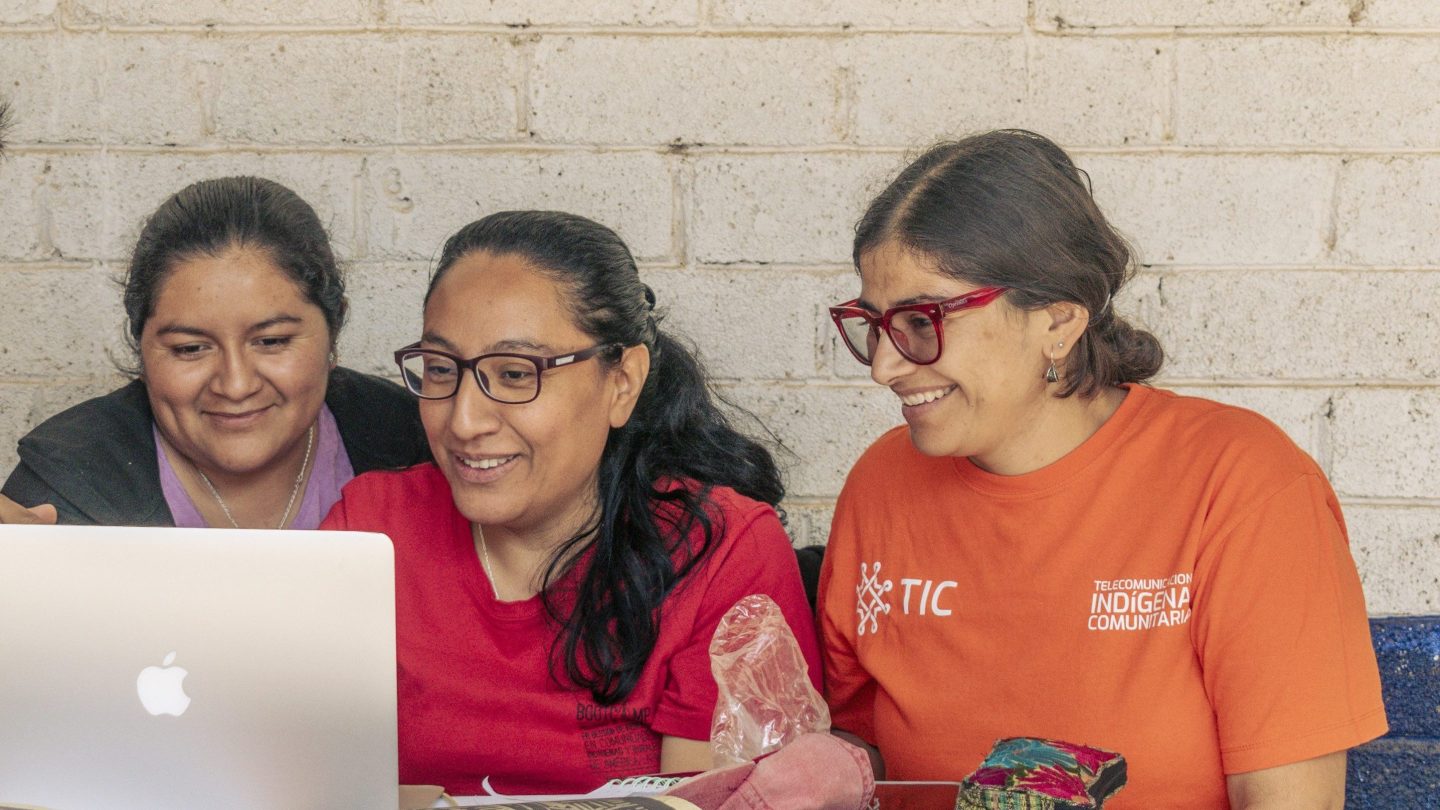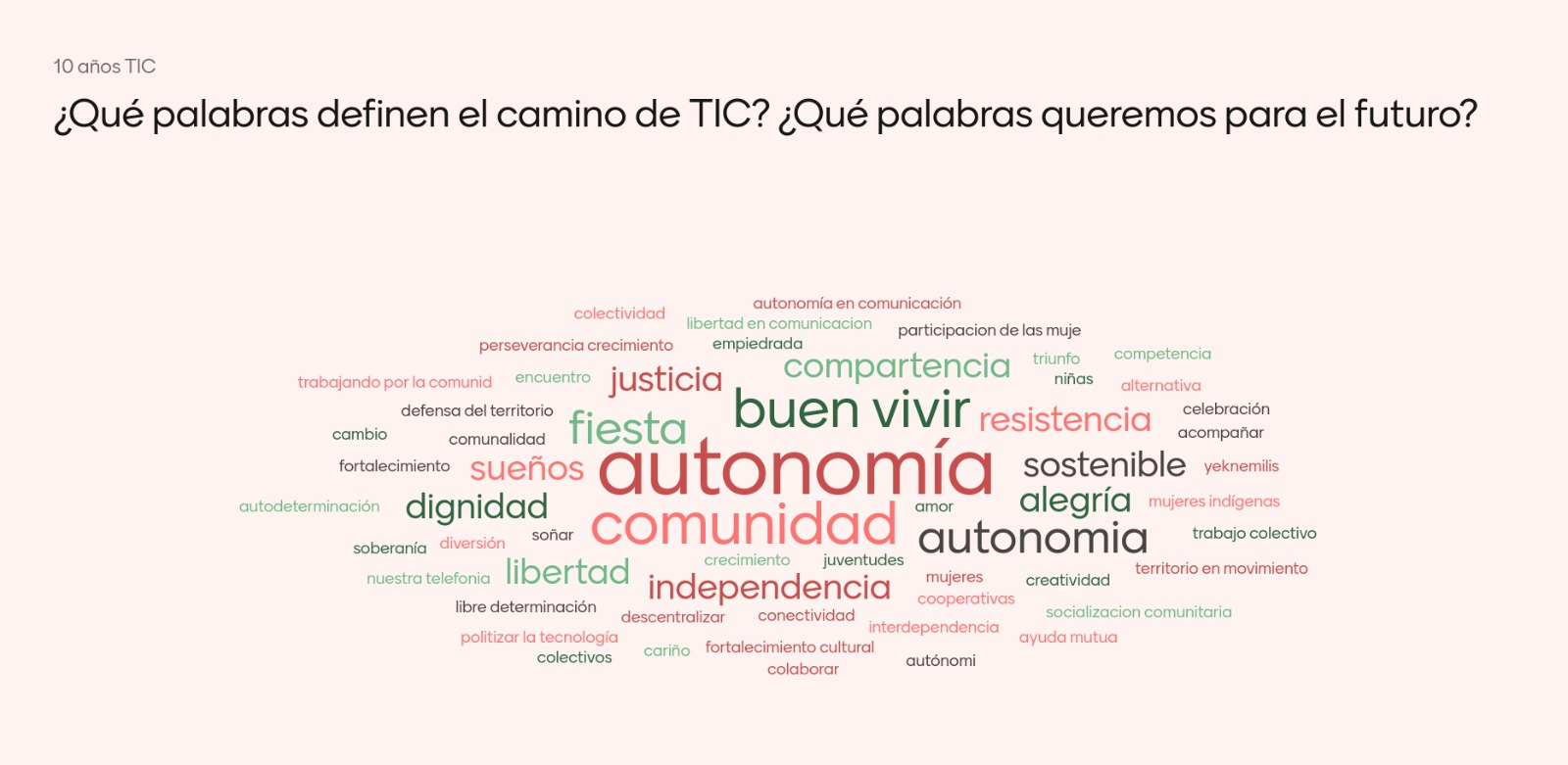
The 10th anniversary of the first Indigenous concession for telecommunications provided an opportunity to reminisce about the road travelled by TIC A.C., inviting us to look back on the historic struggle waged by Mexican Indigenous communities for their right to communication, and to treasure the memories of that journey towards justice and autonomy for the people.
“Recordar”, the Spanish word for “remember”, comes from the Latin “recordari”, meaning to pass again through the heart, and that meaning takes on special significance when we consider that this path has been paved with struggle, hope, gains, political impact and transformations of the communities in their efforts to strengthen their autonomy, through the local construction of effective and just communications.
To commemorate these 10 years, an online talk was organised with the participation of different Indigenous communities and allied organisations, which together looked back on and celebrated the history of TIC A.C.

Peter Bloom, general coordinator at Rhizomatica, focused on the “prehistory”, as he called the years leading up to the birth of TIC A.C. as a formal organisation. It was a time full of ideas and dreams in the communities, as they worked to address a critical need: their right to communicate. That was the first spark that ignited a whole web of actions, leading to the conviction that telecommunications could be done differently, that it could be firmly grounded in the local and with community needs placed at the centre.
A milestone of that first stage was the year 2013, when Indigenous communities from the Oaxacan mountainous region of southeast Mexico, in particular the Talea de Castro and Yaviche communities, together with Rhizomatica and REDES A.C., dared to experiment and imagine a new technological, organisational, economic and social model that would support a telephony project of their own. Participants looked at photographs and recalled those first experiments with antennas, the assemblies to discuss the future of the project and the efforts to obtain Mexico’s very first Indigenous social concession for telecommunications, which also resulted in the formal establishment of TIC A.C. as a civil association.
This community-based struggle revolutionised the country’s legal frameworks, leading to a very solid legal system, made possible by communities that pursued the dream of having their own telecommunications networks, as Erick Huerta, general coordinator at TIC A.C. and REDES A.C., recalled.
Since its inception, the model developed by TIC A.C. has focused on collaborative work in the territories, providing social and technological support to the communities to help them develop their knowledge and skills for building, repairing and managing their telecommunications networks in a community-centred and autonomous way. Marco Luna, operational coordinator at TIC A.C., spoke of communities that are still running their original community-based 2G cell phone project 10 years on, and how, in some contexts, they are still relevant even with the arrival of 4G networks.
In such a changing technological environment, TIC A.C. has evolved to ensure that communities are not left out, engaging them in the efforts to expand its community-centred model through a virtual mobile operator of their own, using the shared network provided by ALTAN and proving that a national-scale operator can have a social and community-based approach. That was how Micheli Alavez, a member of the community technology committee of Santa Inés de Zaragoza, Oaxaca, put it, as he shared the experience of promoting the virtual mobile operator TIC OMV in his community.

Olga and Valentina, the TIC OMV administrators in Santa Inés, underscored how this initiative has strengthened that community economically, in contrast to other projects or extractive ventures, and how it has empowered women in the communities, as it has allowed them to demonstrate that they can hold administration and management positions.
The reminiscing was filled with anecdotes and memories of the architects of this history. Emmanuel Ríos, one of the oldest members of TIC A.C., recalled his passage through the organisation. His involvement began in his community's telephony committee, helping other communities set up their telephone networks. Today he is the national coordinator of TIC OMV, engaging with organisations and collectives to collaborate on this project.
That is also the case of Wiki Katat, the virtual mobile operator run by Radio Tosepan Limakxtum. Angélica and Jessy, who participate in this project in the northeastern mountainous region of Puebla, highlighted the importance of the knowledge exchanges and collective work that drove TIC OMV and Wiki Katat, the two social community-centred mobile operators that exist in Mexico, and which are now beacons that represent the feasibility of more just local telephone services.
Adrián López of the Local Networks(LocNet) initiative, implemented by APC and Rhizomatica, who has helped communities set up their own communication networks, movingly recalled how this project was able to grow and reach more and more places in the country through a social approach that is a key factor in TIC A.C.: the act of sharing.

TIC A.C.’s participation in community processes has also enabled the strengthening of spaces of communication, which have been key in organising, struggling and defending the communities’ territories. This was highlighted by Alexander and Aldo of Radio Padiuxi, the community radio of Capulálpam, Oaxaca, with which TIC A.C. is working very closely in the development of fibre optic community-centred internet networks.
If there was one thing that stood out in this talk, it was how TIC A.C. has evolved and the resilience it has shown, with its capacity to collectively reinvent itself and change in order to keep the project relevant. For TIC A.C., technology is a pretext for coming together, building community and working collectively in favour of autonomy, renewing the commitment to continue working in and for communities.
This is why TIC A.C. has undergone a reorganisation, emphasising collaboration and the development of new organisational, capacity-building and technological strategies to continue furthering autonomy. María Teresa Ramírez, who works in the engagement area, highlighted the hybrid telephone/internet projects, the use and installation of fibre optic networks and related training, the capacity building in digital security, the development and implementation of open source software, and the healthy and conscious use of the internet.

One example is the Caparazón Digital project that seeks to familiarise people with free and secure communication tools. This is a collectively managed project, built on its own decentralised servers, also managed collectively and with open source software that allows users to find safer ways to communicate, as well as opening the door to federated social media.
For its part, TIC OMV represents a current option for 4.5G telephony with nationwide coverage in Mexico that preserves its community roots and that, with each use, achieves a fairer redistribution of its earnings among the communities, collectives, organisations and cooperatives that participate in its administration, while at the same time generating collective funds for social strengthening and local content creation, which are applied to purposes decided in assemblies.
This celebration of the 10 years of TIC A.C. is, in itself, a reminder of the importance of continuing to foster opportunities to come together, work towards achieving autonomy and build bridges between communities, organisations and individuals. Let this reminiscing be a call to keep moving forward together.

During the discussions, the people watching the transmission were invited to participate in a group activity, contributing ideas to generate a word cloud by responding to the following questions: What words define the path of TIC A.C.? What words do we want for the future? The answers formed a collective conceptualisation that provides a compass to guide TIC A.C.’s way forward.
Víctor Abraham Briones Payán coordinates the communications area at TIC A.C. – Indigenous Community-Centred Telecommunications, since 2024. He holds a Bachelor’s Degree in Design from Universidad Iberoamericana Puebla and is a candidate for a Master's Degree in Communications for Social Change at the same university. He is also a cooperative partner at Red TIC, a community technology cooperative, and at Cangurú, a business promotion cooperative.
Daniela Bello coordinates the communication and dissemination area at REDES A.C., an organisation she has been working with since 2020. She holds a Bachelor’s Degree in Communication Sciences from Universidad de las Américas Puebla (Mexico) and a Master’s Degree in Political Action, Institutional Strengthening and Citizen Participation from Universidad Francisco de Vitoria (Spain). She has also contributed to the Supporting Community-led Approaches to Addressing the Digital Divide project implemented by Rhizomatica and APC.